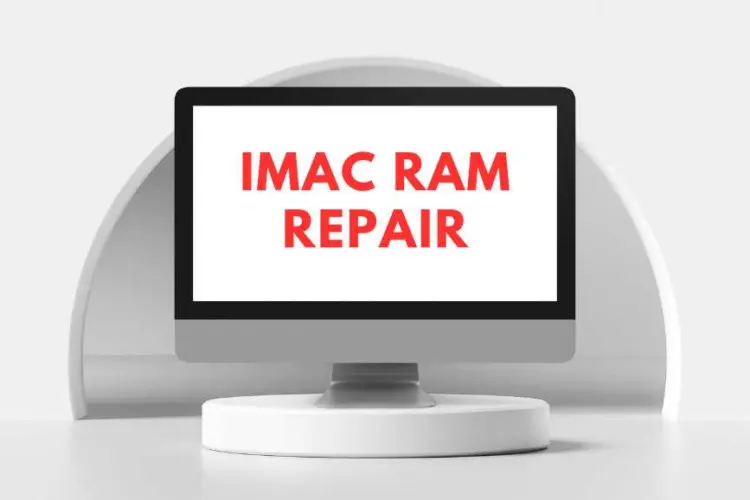
The Ultimate Guide to iMac RAM Repair
The iMac is outstanding in that it represents the Apple brand, which signifies performance, design, and reliability in desktop computing. Thus, professionals and technology fans
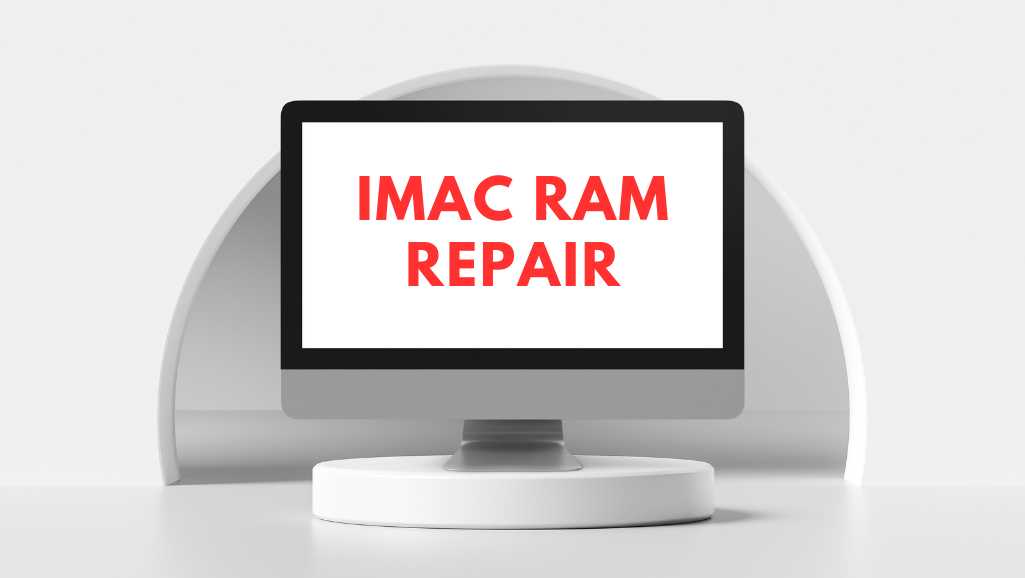
The iMac is outstanding in that it represents the Apple brand, which signifies performance, design, and reliability in desktop computing. Thus, professionals and technology fans consider it among their favorites to place in the center of their digital creativity and productivity. As in every complex piece of machinery, it is not above the normal wear and tear brought about by time and use. Amongst all its parts, Random Access Memory (RAM) occupies the most implicative place in the question of iMac’s performance, working as a foundation for multitasking and efficient application operation.
When issues arise with the RAM, however, it can significantly affect the iMac operation and produce a very frustrated user. This is most often, if not always, the case; identifying and dealing with them proactively can often be the difference between a small nuisance and a big headache.
We’ll take a much more in-depth look at all these common issues associated with the iMac RAM in this blog post, where we give insights on how to troubleshoot, repair, and maintain to assure longevity for your iMac.
Definition and Role of RAM Random Access Memory (RAM) is very key in all iMacs and other computing systems. In this case, it temporarily holds the operating system, applications, and the data in current use in the computer processor for rapid access. Unlike SSDs or HDDs, really big long-term storage devices, RAM is constructed for pure speed to let your iMac multitask in the most productive manner and run applications buttery smooth.
The amount and speed of RAM in your iMac directly influence its performance. In other words, RAM should be sufficient and high-speed enough to permit performance better than that of multi applications, complex software, and large file processing without lag or stuttering. Quite useful when operating in tasks like video editing, 3D rendering, and large data processing that needs constant on-the-go retrieval and storage of data.
Each class of Apple iMac, starting from the beginning, has its kind of RAM with differing types of specifications and performance capability. From DDR3, all the way down to the current DDR4, and far much more, knowing which type of RAM your iMac uses is very key in the process of troubleshooting or when upgrading your iMac.
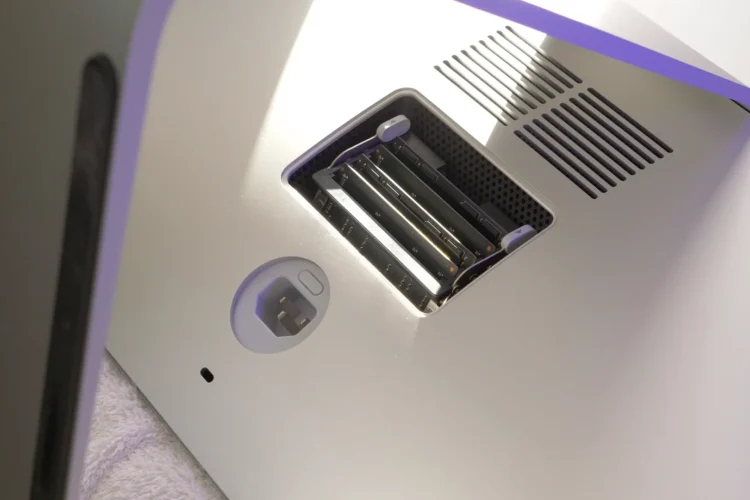
System Instability: One of the primary signs of RAM issues in an iMac is system instability. This may manifest as frequent shutdowns, the appearance of the Spinning Beach Ball of Death, or random system reboots. Poor storage and retrieval of data in the RAM can lead to inconsistent behavior, undermining the smooth operation of the operating system.
Degraded Performance: If you notice a significant lag or slowness when performing tasks that were previously fast, RAM issues might be the culprit. Inadequate or damaged RAM can result in insufficient space for running applications, leading to sluggish performance.
Boot-up Problems: iMacs experiencing RAM issues may encounter difficulties during the boot-up process. In some cases, the system may fail to boot at all, accompanied by a series of beeps indicating a RAM-related error. Alternatively, the iMac may boot up, but a folder with a question mark appears, indicating the inability to find a valid startup disk due to RAM miscommunications.
Identifying and addressing these common RAM issues promptly can help restore optimal performance to your iMac.
Age and Wear: The RAM can also get worn out with age, particularly in older iMac models. Physical components are constantly cycled through a process of heating and cooling, which over long periods might make them age or wear out.
Heat and dust accumulation: The other risk factor includes the accumulation of both heat and dust in the iMac that has exceeded the set requirements of the components. In this case, dust may be harmful if it blocks the air vents, and this is because it might be leading to an overheating effect, which may be devastating to the RAM and, generally, the health of the computer.
Software conflicts: Sometimes, RAM-related issues can be originating from software conflicts. Implications from faulty updates, incompatible applications, or corrupt files could relate to overusing or misuse of the RAM, which leads to instability and crashes.
Always make sure the iMac is off and properly unplugged before getting your hands on any of the DIY repairs or troubleshoots. Work in static-free surroundings, so you do not damage some very delicate components. Have the right set of tools, from screwdrivers to anti-static wrist bands, at your disposal when installing or handling the RAM.
System Report Check: Check the System Report if installed on the iMac. Click the Apple logo > About This Mac > System Report > Memory.
If the RAM isn’t listed correctly, it could indicate a detection issue or failure.
Memory Diagnostic Tools: Use the built-in hardware test from Apple to check whether there is a problem with the RAM. If your problems continue, restart your iMac, and as it powers up, hold down the D key to run Apple Hardware Test. Review the results that will be shown on the screen from conducting the test, and follow the on-screen instructions, looking at the error codes or descriptions for the RAM.
Reseat the RAM: If reseating the modules doesn’t do the trick, every once in a while, you have to just reseat the RAM. Turn off your iMac, then open the access panel or screen (it could be one or the other, depending on the model). Carefully remove the RAM modules from there. After that, reinstall them, making sure they are well-seated back in their slots.
Testing the RAM modules individually: If reseating doesn’t do the trick, then go ahead and test each of the RAM modules one at a time. Leave only one; then boot your iMac. This makes sure that the faulty module is identified. Do the same with each one until you find the one that gives you problems.
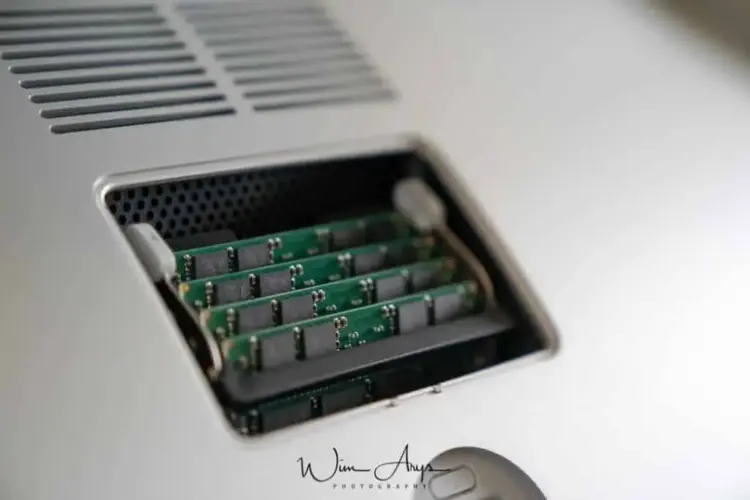
The process and design of accessing your RAM to change it out will vary with your iMac model. Most 27-inchers will generally have a small access panel on the back.
In cases of models not having user-serviceable RAM, like the 21.5-inch iMacs or the new ones that have soldered memory, this will probably be done by a professional since accessing the internals is rather intricate.
Locating the RAM Slot: Identify the location of the RAM access panel or how to open the iMac to access the RAM.
“Removing Old RAM: Lightly free the catches that secure the RAM in place, and then pull the module out at an angle.
Installing New RAM: Slot the new RAM module into place, ensuring the module’s notch aligns with the ridge on the slot. Press the module gently into place at the same angle it was removed, then press down until the clips secure it in place.
Always check for compatibility before buying new RAM with your iMac model for type, speed, and maximum capacity.
Matched Pairs: To enable the usage of the dual-channel architecture, the RAM should be installed in matched pairs.
Quality Brands: Opt for reputable brand modules that are known for reliability and compatibility with iMacs.
Non-User Serviceable Models: For professional servicing, your best bet is the iMac model that does not provide easy user access to the RAM or upgrades.
Persistent Problems: When you have followed the above do-it-yourself steps but the problem does not go away or one and the same problem recurs, this may be something more serious and best left to a professional.
Warranty considerations: Warranty and AppleCare iMacs are professional-repaired, so as not to lose warranty.
Diagnostic Tests: This would include proper full diagnostics by some experts to identify the RAM issues or any other underlying problems accurately.
Expert Replacement Technicians: Even the most complex models are safely supported by skilled technicians to replace or repair the RAM; this is included in cases with soldered memory or high complexity during disassembling.
Services Warranty: Most of the professional repairing service comes with the warranties of the service offered, hence giving assurance in service and reliability.
Certifications: Look for providers that are Apple-certified or have a strong track record with iMac repairs.
Recommendations and Referrals: Check for recommendations by other iMac online and seek their advice on how to get a genuine service provider.
Transparency: Look for a service that is transparent with its pricing, clear with the steps of how the repair is being done, and with an easy-to-understand warranty policy.
The RAM of your iMac will last longer and serve you to the best if you keep it in the right condition. It goes beyond repairs or upgrades; there are preventive measures to be observed that will keep you off from future problems and ensure your machine runs smoothly while its system remains stable. Below are some of the highlights of the best practice and helpful maintenance tips to ensure the protection of your iMac RAM.
Keep Software Updated: Always ensure that macOS and every application are up to date. Usually, these updates will contain improved and bug-fixed versions that will, most of the time, work better with RAM management and more efficiently.
Check RAM Usage: Watch out in which application the use of RAM is exceeding the general percentage. Management of the resource-intensive applications allows not to overload the RAM with unnecessary data.
Overload: Multitasking has been one of the greatest features of the modern iMac, yet it is recommended not to overload the machine with more than the required application. Pressing on may subject the system to immense pressure on the RAM, something that may lead to performance and long-run damage issues.
Clean Your iMac: Dust capable of accumulation in your iMac will result in overheating, something dangerous to all other computer components, including RAM. Make sure that you clean vents regularly and sometimes also think of professional internal cleaning for keeping the temperatures and therefore performance optimal.
Use Memory Management Software: There are many good and powerful memory management tools available for purchase. These tools have the ability to optimize RAM usage by automatically freeing the unused RAM, hence improving system performance.
Hardware check: If the model of the iMac allows, sometimes check the physical state of your RAM. After you check and ensure it is correctly placed in their slots, check now for deterioration in the modules.
Ventilation and cooling: Place your iMac in a position with access to enough air for it to ventilate. Avoid putting the iMac next to sources emitting heat or in places with poor circulation of air. Look for the services of cooling from outside if you tend to overwork the system all the time with high-performance tasks that place a lot of pressure on the system.
Power Management: Use an iMac surge protector to protect the computer against the ‘spikes’ in electric current that may damage internal parts, e.g., RAM. Besides, it is possible to protect your computer from damage when there is an abrupt power outage with the application of an uninterruptible power supply (UPS).
In this tutorial, we have navigated through the diagnosis, troubleshooting, and repair of commonplace iMac RAM problems—emphasizing more with the keyword “iMac RAM repair.” Be it a techie or a lay computer user, you should know the signs of warning when the RAM goes bad, ways to rectify them, and a few basic preventive measures so that your system stays alive and healthy for a period.
And these are facts: facing an issue with RAM can really be a very scary experience. But armed with the right kind of information and resource material, you can take this situation by the horns. Not getting too dragged off with something going wrong—be it a DIY fix or professional help, the point is to save the smooth functioning and efficiency of your iMac. Please take note that keeping updated on your iMac RAM isn’t all about repairing it; it is the practice that will be ensuring, on the other hand, that the performance rate of your iMac stays on top and better serves you in the process.

The iMac is outstanding in that it represents the Apple brand, which signifies performance, design, and reliability in desktop computing. Thus, professionals and technology fans
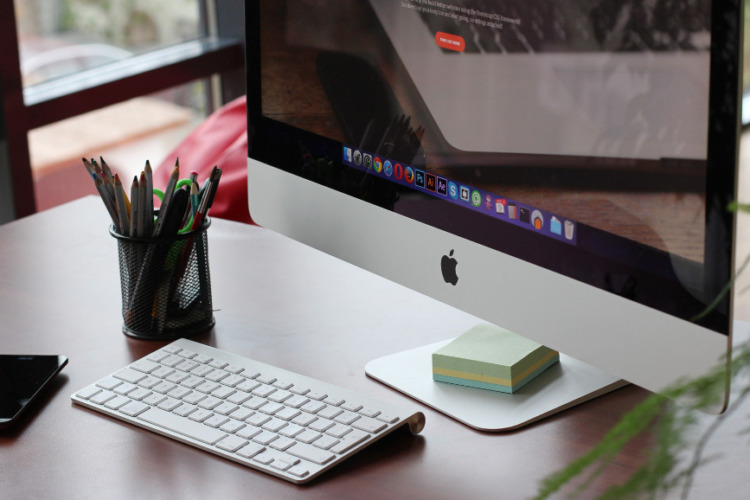
We’ve all been there. Your once-mighty iMac, the pride of your desk, has become molasses in motion. Applications launch at a glacial pace, windows crawl